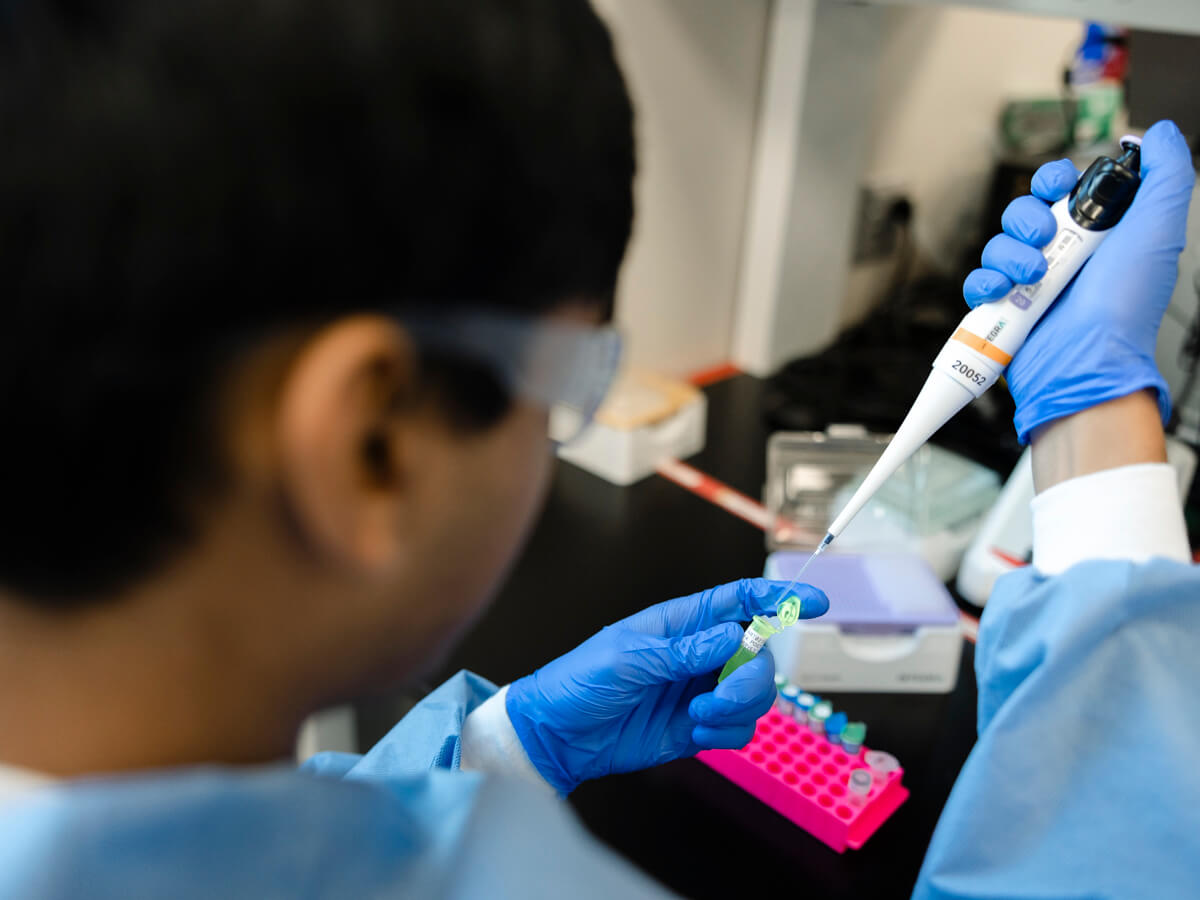Re-engineering the building blocks of gene therapy
Our platform enables us to design groundbreaking therapies by addressing the current limitations in gene therapy, notably the lack of adequate targeted delivery of the genetic payload.
ART: Affinia Rationally-designed Therapies
With our ART platform, we use the principles of rational design to re-engineer the building blocks of gene therapy: the capsid, the payload, and the manufacturing process. We employ cutting-edge tools and methods such as next-gen sequencing (the technology that was used to map the human genome), AI, and structural modeling. Over the years, we’ve generated and analyzed terabytes of data on structure, process, and functional activity and set up training models for machine learning. We are now making successful predictive designs.


Revolutionizing capsids
We design novel capsids that better target tissues and cells that are the desired sites of efficacy while avoiding sites of toxicity. We do this by re-engineering AAV9 as it’s been shown to be safe in people and has worked in a small number of diseases. We incorporate short peptides into the AAV sequence that serve as homing beacons for specific tissues, while avoiding others. We also check that the capsids are safe and manufacturable and translate from animals to people. These novel AAV-peptide capsids are specific for the tissues relevant to the disease we are trying to treat.
Reimagining payloads
We construct innovative therapeutic payloads that serve as the genetic message to treat the disease. The message is written in a ‘code’ the cells in the body understand. It can ‘program’ the cells to start making a new protein that it didn’t make before (gene replacement), or to interfere with the cell’s ability to make a specific protein that’s causing disease (knockdown), or to change the genes of cells (gene editing). It can ‘program’ cells to manufacture their own medicines (e.g., vectorized antibody). To get the best therapeutic payload for a disease, we may form strategic partnerships with other companies or academic institutions.
Innovating manufacturing
We develop new manufacturing approaches to improve the quality, yield, and cost of gene therapies. We explore new cell lines, plasmid designs, and transfection agents to support development of our next-gen gene therapies for not only rare diseases but also prevalent ones. We believe that manufacturing approaches are as critical as efficacy and safety in gene therapy. At every step of our research and development and in our selection of capsid, payload, and manufacturing approach, we have the patient in mind. We can’t wait to create the next transformative medicine.


Building blocks of a gene therapy
There are many elements to make a successful gene therapy. The key ones are the capsid, the therapeutic payload, and the manufacturing process.
The capsid is the ‘envelope’ that delivers the therapeutic payload to its right tissue in the body. The therapeutic payload is the genetic message or ‘letter’ put inside the capsid envelope that tells the cells in the tissue what protein to make and how much, essentially fixing the defect underlying the disease. The manufacturing process is how the capsid and therapeutic payload are put together properly as a final product before being given to a patient. For gene therapies, the manufacturing process is so important that experts say “the process is the product.”